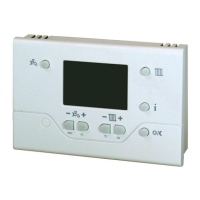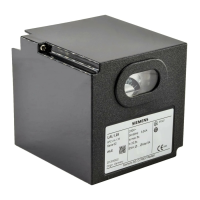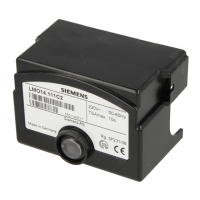SD39RIO-1 INSTALLATION
January 2001
2-15
2.5.2 IOBUS Cable Connection up to 300 ft. (91 m)
for Redundant and Non-Redundant Systems
This section describes the preparation and installation of IOBUS cables for rack-to-rack redundant or non-
redundant APACS+ or QUADLOG systems when the needed cable length exceeds the maximum standard
length of 98.4 Feet (30 meters) of a factory-prepared IOBUS cable, but is less than 300 feet (91 meters).
The cable preparation procedure provided here involves splicing a custom-length cable that has unprepared
ends. This kind of cable is type W2072. It is intended for use as an IOBUS extension cable between two
Remote I/O Racks, or between a Remote I/O Rack and another type of rack (e.g., MODULRAC or
SIXRAC).
The Remote I/O Rack can accommodate either prepared or unprepared ends of available IOBUS cable(s). A
prepared cable end has a molded connector on it and is to be plugged into the appropriate IOBUS IN or
IOBUS OUT connector on the rack’s backplane (see Figure 2-4). The wires emerging from an unprepared
cable end are to be individually stripped and connected directly to the screw terminals of the associated
IOBUS IN or IOBUS OUT terminal block, also located on the rack’s backplane (see Figure 2-4).
When another type of rack (e.g., MODULRAC or SIXRAC) is also used, it requires a prepared cable end
(with a connector) to attach that rack to the IOBUS. In these instances, you must supply DIN rail-mounted
style terminal blocks (one for A side and one for B side). The terminal blocks are needed to transition
between a W2072 unprepared cable end and another cable segment that has a prepared end that is usually
obtained by cutting a standard IOBUS extension cable in half and preparing the cut end. To modify an
IOBUS cable in this way, refer to section 2.5.5. Each user supplied terminal block must be able to
accommodate wire sizes of 16 to 28 AWG (1,3 mm
2
to 0.09 mm
2
).
IMPORTANT
It is important to preserve continuous cable impedance through all splice
connections. This is to minimize signal reflections within the cable and help assure
collision-free communications. After preparing cable ends, make sure each intended
pair is re-twisted at the same intervals all the way to the screw terminals of the
terminal blocks. Refer to Figures 2-12 and 2-13.
To connect a W2072 IOBUS cable between a terminal block and a Remote I/O Rack:
1. Determine the length of W2072 cable needed to connect from the terminal block location to the
appropriate IOBUS connection point on the Remote I/O Rack’s backplane. Allow slack for cable
stripping, dressing, tagging, and strain relief at each end.
2. At the user-supplied terminal block, provide strain relief for the W2072 cable end. Connect the W2072
cable conductors (wires) to the terminal block. Wire stripping and color code information for making
connections are provided in Table 2-1 and Figure 2-11 respectfully.

